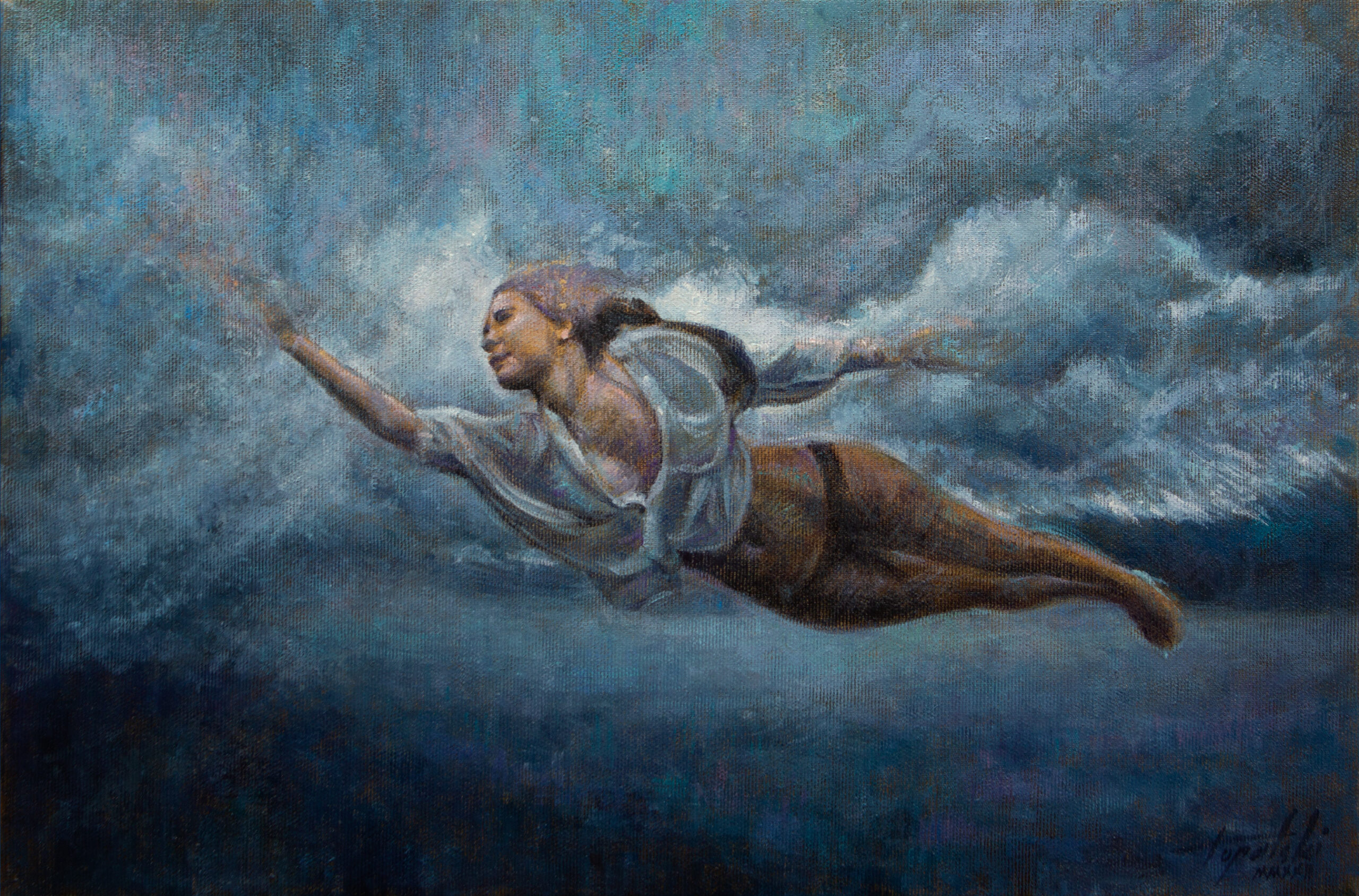The Role of Feeling and Expression in Figurative Oil Paint: An In-Depth Analysis of Subject and Make-up
The interaction of emotion and expression in figurative oil painting offers as a crucial lens via which one can take a look at the intricate connection between subject matter and make-up. Artists harness different strategies, from color choice to brushstroke characteristics, to cultivate psychological resonance within their works.
Recognizing Emotion in Art
Feeling in art acts as a powerful avenue for expression, allowing artists to communicate intricate feelings with their job. In figurative oil painting, this psychological deepness is often depicted via the depiction of the human figure, catching the subtleties of human experience. The choice of topic, shade scheme, and brushwork all contribute to the emotional resonance of an item.
Artists regularly bring into play personal experiences, societal problems, or global styles to evoke feelings in the customer. For example, a picture might mirror vulnerability, while a dynamic figure in movement can represent flexibility or chaos. These psychological strings link the customer to the art work, cultivating a discussion that goes beyond the aesthetic tool.
Furthermore, the interplay between light and darkness can amplify emotional intensity, directing the audience's look and attracting focus to certain components within the make-up. Making use of appearance in oil paint better includes layers of intricacy, inviting a tactile response that boosts the psychological experience. In general, comprehending feeling in art is critical for valuing the nuances that define figurative oil paint, as it changes simple representation into an extensive expedition of the human condition.
Key Elements of Make-up
In the world of figurative oil paint, the structure serves as the underlying structure that arranges aesthetic components and improves the emotional narrative. Necessary parts of composition consist of balance, comparison, centerpiece, and rhythm, each contributing to the overall influence of the artwork.
Balance describes the distribution of aesthetic weight within the painting, which can be achieved with in proportion or unbalanced setups. A well-balanced make-up supplies stability, permitting the audience to involve with the piece sympathetically - figurative oil painting. Contrast, on the various other hand, includes comparing different components, such as light and dark or cozy and trendy colors, to lead the customer's eye and stimulate emotional responses
The centerpiece is essential, as it routes interest to one of the most significant component of the paint, often highlighting the emotional core of the story. Through strategies like color saturation or placement, musicians can emphasize this area effectively. Finally, rhythm pertains to the repeating of components, creating a sense of activity and circulation throughout the composition. By skillfully incorporating these crucial elements, artists can craft engaging and psychologically resonant metaphorical oil paints that captivate and engage their audience.
Topic and Its Influence
Topic plays a pivotal role in figurative oil painting, as it not only serves as the foundation for the narrative however likewise shapes the audience's analysis and psychological involvement with the art work. The selection of subject issue-- be it a singular figure, a group dynamic, or a thematic representation-- directly influences the psychological ambience shared to the target market.

For instance, portraits typically evoke personal connections, disclosing the ins and outs of human expression and personality, while scenes portraying communal tasks can develop a feeling of belonging or fond memories. The social and historical context of the subject matter improves the customer's understanding, prompting much deeper that site reflections on societal standards, values, and the human condition.
Various topics likewise create differing levels of interaction; a dramatic dispute shown through figures in tension may evoke sensations of stress and anxiety or compassion, while serene landscapes can invoke harmony and reflection. Ultimately, the effect of subject in metaphorical oil painting is profound, as it functions as a channel for psychological vibration, guiding the audience's feedback and interpretation, and cultivating a link between the viewer and the art work. This interaction is vital for the effective interaction of the musician's intent.
Strategies for Stimulating Sensations
The effectiveness of figurative oil painting in conveying emotions is considerably affected by the methods employed by the artist. One of the most vital methods is the use of color theory, where the tactical choice of colors can stimulate certain psychological useful source actions. Cozy colors, such as reds and oranges, commonly generate feelings of passion or aggression, while cooler tones like blues and greens tend to evoke peace or despair.
One more vital method is the control of light and shadow, known as chiaroscuro. This approach boosts the three-dimensionality of numbers, producing dramatic contrasts that can intensify psychological depth. The positioning of light can assist customers' emotions, highlighting specific components of the structure.
Brushwork likewise plays an essential role; loose, meaningful strokes can communicate energy and spontaneity, whereas smoother strategies may suggest tranquility or accuracy. The Discover More Here plan of topics within the composition can influence psychological effect. Close proximity can recommend intimacy, while range may indicate seclusion.
Eventually, the mix of these methods enables musicians to craft narratives that reverberate with the viewer, changing a mere aesthetic experience into an expressive emotional trip. - figurative oil painting

Instance Research Studies of Remarkable Works
Checking out notable jobs of metaphorical oil painting reveals exactly how numerous techniques are employed to evoke effective feelings. One exemplary situation is Edvard Munch's "The Scream," where the altered number and swirling history convey existential dread. Munch's usage of shade-- vivid oranges and deep blues-- escalates the emotional impact, showcasing exactly how scheme selections can form viewer experience.
An additional substantial job is Pablo Picasso's "Les Demoiselles d'Avignon." Below, fragmented forms and bold brushstrokes mirror a turbulent psychological landscape, testing typical representations of the female number. Picasso's cutting-edge structure not just captures the customer's focus yet likewise invites consideration on themes of identity and sexuality.
Additionally, Frida Kahlo's "Both Fridas" supplies an emotional exploration of duality and self-identity. The contrasting numbers, connected by a shared heart, exhibit Kahlo's psychological deepness and personal story. figurative oil painting. Her thorough interest to detail and symbolic elements offer to engage audiences on a visceral degree
These instance research studies highlight the profound link in between emotion and composition in metaphorical oil paint, exposing how musicians harness method to communicate intricate sensations and narratives that reverberate across time and culture.

Conclusion
In verdict, the interplay of feeling and expression in figurative oil paint substantially enhances the visitor's experience and interpretation of the art work. With a careful option of subject matter and compositional techniques, musicians convey extensive stories that resonate on both individual and global degrees. The application of shade brushwork, chiaroscuro, and theory more magnifies psychological depth, changing each canvas right into a powerful representation of the complexities of the human experience.
In figurative oil painting, this psychological deepness is usually depicted with the representation of the human figure, capturing the nuances of human experience.In addition, the interaction between light and shadow can magnify psychological strength, leading the viewer's look and drawing interest to certain components within the make-up. The use of texture in oil painting even more adds layers of intricacy, inviting a tactile response that enhances the emotional experience.The focal point is important, as it guides focus to the most substantial component of the paint, commonly highlighting the psychological core of the story. Inevitably, the influence of subject issue in metaphorical oil paint is extensive, as it serves as a channel for emotional resonance, directing the audience's reaction and interpretation, and fostering a link in between the art work and the onlooker.
Comments on “Exploring the Depths of Emotion with Figurative Oil Painting Methods”